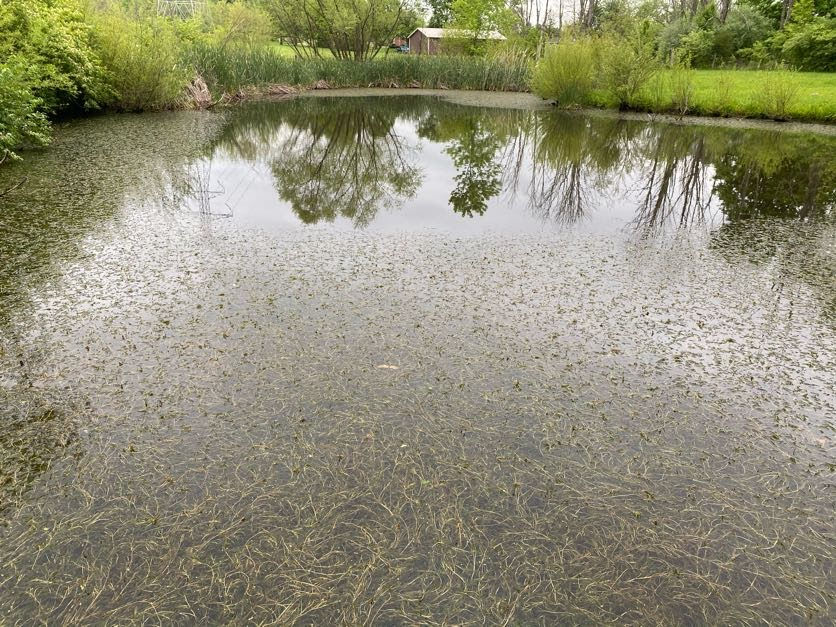

Information about Curlyleaf Pondweed
Curlyleaf Pondweed (CLP) entered North America in the late 1800’s. It likely came to Lake Osakis prior to the WW2. Only two times in history can I find there were control measures taken. In the 80’s a mechanical harvest was done, turned out to be a non-approved method by DNR because it just reseeds itself. The current method (Aquathal K herbicide) used was done in 2007, 08, 09 on portions of the lake. Aquathal K is specific to CLP and does not harm MN native plants.
CLP impacts the Lake in several ways, it supports an algae bloom, floating plants interrupt fishing by catching on your line, dead and decaying plants on the shorelines, decaying plant materials (muck) on the lake bottom, as well as interfering with native plant growth. CLP life cycle makes all the above mentioned possible. CLP starts to grow in the winter, yes under the ice. It sets Seed and Turions in mid-summer then of course the plant dies off. The management effort is to stop the plant growth before Seed Set or Turion development takes place. Research indicates CLP Seed and Turions can survive 3-5 years, therefor once the presence is determining the recommendation is to monitor (survey) and treat at least for three consecutive years.
OLA President
Bruce Magnus
Curlyleaf Pondweed /Planning 2025 4/28/2025
Curlyleaf Pondweed (CLP) is an Aquatic Invasive Species (AIS) that has supported algae blooms and shoreline plant residue on Lake Osakis. The entire Lake Osakis has been surveyed to determine the locations of CLP. This survey was completed by Blue Water Science (see attached map).
MN DNR requires a private contractor to survey public waters prior to Aquatic Invasive Species Management efforts prior to permitting. The 2025 Lake Osakis results for Curly Leaf Pondweed management are pictured on the maps.
 Curlyleaf Pondweed /Planning 2025
Curlyleaf Pondweed /Planning 2025

Curlyleaf Pondweed Treatment Plan & Maps


